
The Thirty Years' War was one of the longest and most destructive conflicts in European history, lasting from 1618 to 1648. Fought primarily in Central Europe, an estimated 4.5 to 8 million soldiers and civilians died as a result of battle, famine, and disease, while some areas of modern Germany experienced population declines of over 50%. Related conflicts include the Eighty Years' War, the War of the Mantuan Succession, the Franco-Spanish War, the Torstenson War, the Dutch-Portuguese War and the Portuguese Restoration War.
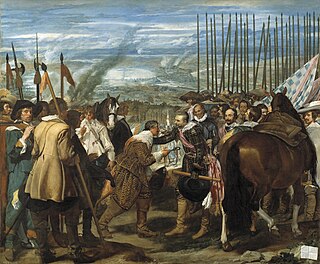
1625 (MDCXXV) was a common year starting on Wednesday of the Gregorian calendar and a common year starting on Saturday of the Julian calendar, the 1625th year of the Common Era (CE) and Anno Domini (AD) designations, the 625th year of the 2nd millennium, the 25th year of the 17th century, and the 6th year of the 1620s decade. As of the start of 1625, the Gregorian calendar was 10 days ahead of the Julian calendar, which remained in localized use until 1923.

Christian IV was King of Denmark and Norway and Duke of Holstein and Schleswig from 1588 until his death in 1648. His reign of 59 years, 330 days is the longest of any Scandinavian monarch.

The Triple Alliance was signed by the Kingdom of England, the Swedish Empire and the Dutch Republic in May 1668. It was created in response to the occupation of the Spanish Netherlands and Franche-Comté by France. Although Spain and Emperor Leopold were not signatories, they were closely involved in the negotiations.
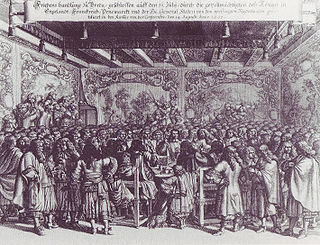
The Peace of Breda, or Treaty of Breda was signed in the Dutch city of Breda, on 31 July 1667. It consisted of three separate treaties between England and each of its opponents in the Second Anglo-Dutch War: the Dutch Republic, France, and Denmark–Norway. It also included a separate Anglo-Dutch commercial agreement.
Treaty of Fontainebleau may refer to:

The Treaties of Peace of Nijmegen were a series of treaties signed in the Dutch city of Nijmegen between August 1678 and October 1679. The treaties ended various interconnected wars among France, the Dutch Republic, Spain, Brandenburg, Sweden, Denmark-Norway, the Prince-Bishopric of Münster, and the Holy Roman Empire. The most significant of the treaties was the first, which established peace between France and the Dutch Republic and placed the northern border of France very near its modern position.

The Battle of Lutter took place on 27 August 1626 during the Thirty Years' War, south of Salzgitter, in Lower Saxony. A combined Danish-German force led by Christian IV of Denmark was defeated by Johan Tzerclaes, Count of Tilly, commanding an army of the Catholic League loyal to Emperor Ferdinand II.

The Treaty or Peace of Lübeck ended the Danish intervention in the Thirty Years' War. It was signed in Lübeck on 22 May 1629 by Albrecht von Wallenstein and Christian IV of Denmark, and on 7 June by Ferdinand II, Holy Roman Emperor. The Catholic League was formally included as a party. It restored to Denmark–Norway its pre-war territory at the cost of final disengagement from imperial affairs.

The 1625 to 1630 Anglo–Spanish War was fought by England, in alliance with the Dutch Republic, and Spain. A related conflict of the Eighty Years' War between the Dutch and Spanish, most of the fighting took place at sea, and was largely indecisive.
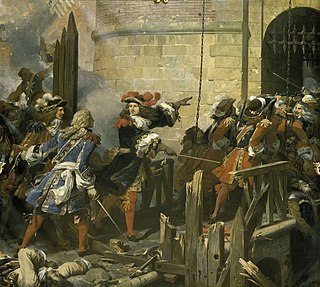
The siege of Valenciennes took place from 28 February to 17 March 1677, during the Franco-Dutch War, when Valenciennes, then in the Spanish Netherlands, was attacked by a French army under the duc de Luxembourg.
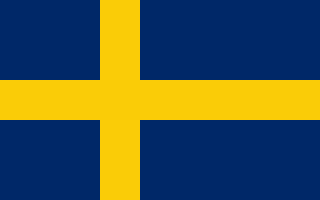
The Swedish Empire was the period in Swedish history spanning much of the 17th and early 18th centuries during which Sweden became a European great power that exercised territorial control over much of the Baltic region. The beginning of the period is usually taken as the reign of Gustavus Adolphus, who ascended the throne in 1611, and its end as the loss of territories in 1721 following the Great Northern War.

Denmark–Norway was an early modern multi-national and multi-lingual real union consisting of the Kingdom of Denmark, the Kingdom of Norway, the Duchy of Schleswig, and the Duchy of Holstein. The state also claimed sovereignty over three historical peoples: Frisians, Gutes and Wends. Denmark–Norway had several colonies, namely the Danish Gold Coast, the Nicobar Islands, Serampore, Tharangambadi, and the Danish West Indies. The union was also known as the Dano-Norwegian Realm, Twin Realms (Tvillingerigerne) or the Oldenburg Monarchy (Oldenburg-monarkiet).

The Treaty of Compiègne, signed on 10 June 1624, was a mutual defence alliance between the Kingdom of France and the Dutch Republic, for an initial period of three years.
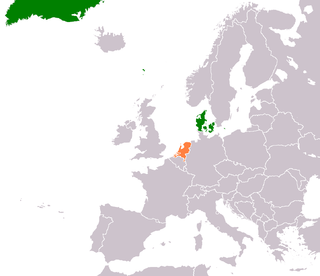
Denmark–Netherlands relations are the bilateral relations between Denmark and the Netherlands. The Netherlands has an embassy in Copenhagen and Denmark has an embassy in The Hague. Both countries are full members of the Council of Europe, the European Union and NATO. Princess Beatrix is a Dame of the Order of the Elephant since 29 October 1975. On 31 January 1998, King Willem-Alexander of the Netherlands also received the Order of the Elephant.
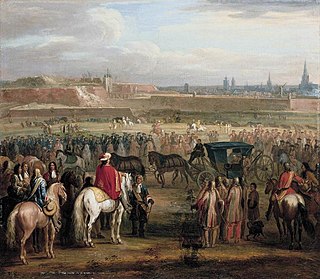
The siege of Cambrai took place from 20 March to 19 April 1677 during the 1672–1678 Franco-Dutch War; then part of the Spanish Netherlands, it was invested by a French army under the duc de Luxembourg. Siege operations were supervised by the military engineer Vauban; Louis XIV was nominally in command but played little part in operations.

The Battle of Mulhouse took place on 29 December 1674 in Alsace, part of Turenne's Winter Campaign during the Franco-Dutch War. It was fought by the French army under Turenne and part of Alexander von Bournonville's Imperial army commanded by Hermann of Baden-Baden.
Events from the year 1667 in Denmark.

There was a complicated involvement between Scotland and the Thirty Years' War of 1618–1648. Scotland and the Scots were heavily entangled in both the diplomatic and military events which centred on the Holy Roman Empire. There were a number of reasons for this participation.

The Scots Brigade, also referred to as the Anglo-Dutch Brigade or the Anglo-Scots Brigade, was an infantry brigade of the Dutch States Army. First formed in 1586, by the late 17th century it usually comprised six infantry regiments, three recruited primarily from Scotland and three from England. It was finally dissolved in 1782 following the outbreak of the Fourth Anglo-Dutch War.


















